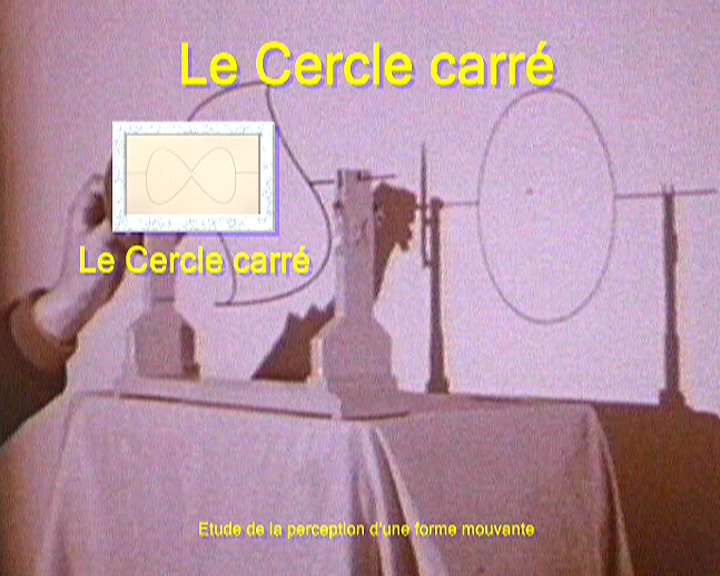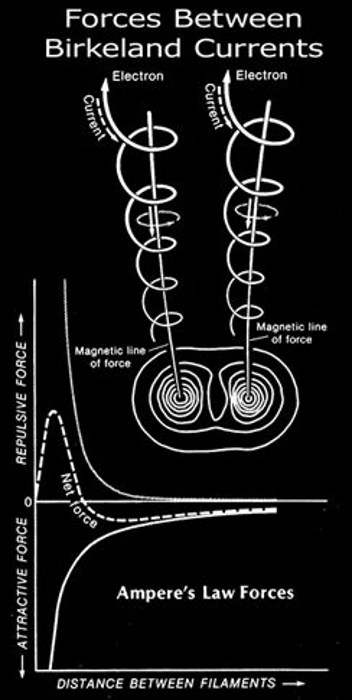John G
The Living Force
What makes sedenions really weird are zero-divisors as in you can multiply two non-zero numbers to get zero.This is wrong. The Octonions aren't associative. The Sedenions aren't an alternative algebra, whatever that means.
What makes sedenions really weird are zero-divisors as in you can multiply two non-zero numbers to get zero.This is wrong. The Octonions aren't associative. The Sedenions aren't an alternative algebra, whatever that means.
Yeah, I'm wondering now if gravity is the way light interacts with itself. So two EM waves don't just pass through each other, but instead each one generates a potential for the other, which influences the way the other moves. This potential would be gravity.
Also, if you like general relativity, then perhaps you can think of gravity bending light, thus causing a perception of curved space, which really is curved space if there is no space. The curved space is then gravity, which in turn bends light. So there's a kind of triad.
Q: (L) Now, did the fellow who built the Coral Castle spin in his airplane seat while thinking his manipulations into place?
A: No. He spun when gravity chose to manipulate him to spin in order to manipulate gravity.
You have zeroed in on the best bit! The projections define hyper-surfaces that have the potential to extend throughout all space. This is how quantum mechanics exists...I think a projective space over hypercomplex numbers would look just like projective space over Rn or Cn. You'd need to show that the vector multiplication is well defined when taking projections and I'd be surprised if it were. Still good stuff though, maths is interesting in its own right.
Thanks! I had checked out his site after re-reading through the Cs transcripts. But my math is still too primitive for me to be able to read his notation. Soon...


Conformal structures/Bounded Complex domains are Poincare disks/spheres/hyperspheres and the conformal metric could have projective structures as an affine connection and the Geometric algebra hodge dual structure (4-vectors as self dual) could give you Standard Model Yang-Mills structures.You have zeroed in on the best bit! The projections define hyper-surfaces that have the potential to extend throughout all space. This is how quantum mechanics exists...
How else can a photon traverse every single possible path through our entire universe? Think about the supposed size of our universe, yet a photon extends through its entirety and creates standing waves.
It is similar to a Riemann sphere, but not...
Unlike Kaluza-Klein, or String theory, you don’t need stupid ideas like microscopic rolled up dimensions. Each sub-space is closed and self consistent, but interactions with external dimensions project as surfaces and volumes - in both directions!
No wonder the ancients thought spheres were of the gods! They are!
Ooooo.....Conformal structures/Bounded Complex domains are Poincare disks/spheres/hyperspheres and the conformal metric could have projective structures as an affine connection and the Geometric algebra hodge dual structure (4-vectors as self dual) could give you Standard Model Yang-Mills structures.
I think a projective space over hypercomplex numbers would look just like projective space over Rn or Cn. You'd need to show that the vector multiplication is well defined when taking projections and I'd be surprised if it were. Still good stuff though, maths is interesting in its own right.
 - using the Hypercomplex number as the basis for the subspace (& its projection) is the reason why Geometric Algebra applies in the first place! The projected hypersphere is why QM exists the way it does...
- using the Hypercomplex number as the basis for the subspace (& its projection) is the reason why Geometric Algebra applies in the first place! The projected hypersphere is why QM exists the way it does...
Spiders are capable of building typical webs in microgravity, provided they have access to a light source, according to new research published in Science of Nature. In the absence of gravity and therefore an up and down feeling, a light source provides a frame of reference for spiders. When a light source is available, spiders weave their normal asymmetrical webs and wait for their prey near the top. However, without light, they build symmetrical webs, which is not normal behavior. It is a surprising discovery *that highlights the relatively unimportance of gravity for spiders when they weave their webs.
(*my comment: don't be so sure, if gravity is what binds everything in creation)
The species chosen for the 2011 spider experiment is the golden silk orb weaver or Trichonephila clavipes. Cushing and Zschokke designed an experiment in which two spiders would build their webs in separate test chambers on the ISS, while two spiders were kept in identical habitats on the ground to serve as a control group .[...]It turns out that spiders, when working in microgravity, tend to weave webs that are significantly more symmetrical than those built on Earth. In addition, the shafts were placed closer to the center of the webs and the spiders did not always keep their heads down.
But this was not the case in all areas. Some webs exhibited a surprising degree of asymmetry, especially for those "whose construction had begun when the lights were on, suggesting that light replaced gravity as an orientation guide during web construction," according to the paper. In addition, the light also provided a reference for the spider in terms of its position on the web (by top, the researchers mean the top of the habitat).
Interestingly, access to a light source was not even considered as a factor in the experiment.
"We would not have guessed that light would play a role in the orientation of spiders in space," Zschokke said in a statement from the University of Basel. "We were very lucky that the lamps were placed on top of the camera and not on several sides. Otherwise, we would not have been able to discover the effect of the light on the symmetry of the zero-gravity networks.
Sorry it's only in beautiful french languageMaybe....
Two geometries in one. It depends on how you look at it.


Hmmm this gives new dimension to the 'illumination', i.e. being (like) lightIMO, I think here's the key. If we accept such a definition of the Cs, this must include both space and energy. And if it turns out to be so, for example, you can turn energy into mass.
The part that I highlight in black, I think, is closely related, in part, to some discussions that arise from the theory of the electric universe.
With respect to octagons, exagons and pentagons, we have this: Saturn's hexagon - Wikipedia
In relation to this phenomenon, one could add and hand in hand with the stellar windows,
the formations we see in the birkeland currents:


Note that a spiral is circular in nature.
Within a birkeland current the following figure can be seen:

Perhaps here we have a relationship between geometry and electromagnetic and gravitational forces.
We must remember that the Cs mentioned that the stars and planets are windows.
It occurs to me that such a hypothetical individual is in wave mode, and when he wishes to materialize, the wave collapses.
I saw an interesting video a few years ago where Dr Donald E Scott gave a talk on the forces in Birkeland currents. Here are a couple of linksHmmm this gives new dimension to the 'illumination', i.e. being (like) light
Exhibiting both particle and wave behaviours or modes.

